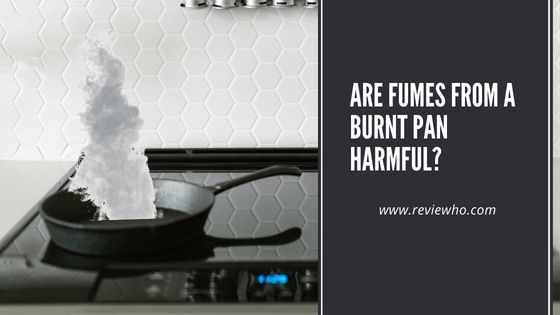At some point, we have all boiled or burnt a pot or pan dry. As you would expect, certain fumes are produced when this happens. It is an occurrence that causes some concern to all of us.
Now, we know that there is a wide range of materials used to make pots and pans. The most popular material is stainless steel. Each material causes reacts differently when burnt to certain temperature levels.
In this post, we will be trying to figure out whether the burnt pan smell is dangerous. We will explain what happens for the fumes are produced and what you can expect.
Are Fumes from a Burnt PFAs & Non-Stick Pots and Pans Harmful?
PFOA is no longer part of Teflon products. Even so, there are certain substances, known as PFAs. They are not understood fully. These, together with certain ingredients in these products might cause certain risks.
In general, Teflon is stable and safe. Regardless, when it reaches certain temperatures, above 500 degrees Fahrenheit, the coating will start breaking down and chemicals will be released in the air in fumes.
These chemicals will cause certain problems such as Polymer Fume fever – Teflon flu. So, burnt pot smell, is it toxic? If you are talking about Teflon-coated pots and pans, yes they are harmful.
Are Fumes from a Burnt Stainless Steel Pan Harmful?
Stainless steel is among the most popular material for making pots and pans. There may be several layers in the pots and pans. However, only the stainless steel will come in contact with the flame.
Normally, stainless steel will give you a good surface that will not react with your food, and the fumes, and will resist heat.
When it is heated, stainless steel will expand. Its surface area, volume, and length will increase as temperature increases. That is normal for all metals.
What about the fumes? Cookware made with stainless steel is normally made using a metal alloy with elements such as chromium and iron. There are also other elements such as titanium, nickel, vanadium, copper, and molybdenum. That is the main reason why stainless steel utensils are thicker.
If you notice any fumes, the chances are that it is from residue that might be on your pan or pot. It is not likely that the stainless steel is burning and causing fumes. That is because the flame on a cooktop is not adequate to cause such reactions. Grade 304 Stainless steel – most popular for cookware – will only melt at very high-temperature levels – above 2500 degrees Fahrenheit.
So, if any fumes are produced, they are most likely from residue or the plastic handle.
Conclusion
Since stainless steel will not produce fumes at low-temperature levels, you can assume that it is completely safe to use. If any fumes are produced, you should try figuring out what produced them. It is also important to ensure you purchase legit products with good construction. Other materials might easily produce fumes and might pose a danger to your health.
Also, read: Are old aluminum pots safe to use?
Feel free to share your observation with me in the comments section!
Also, if you find the information in this post to be useful, be sure to share this post with your friends on Facebook, Twitter, and Pinterest.






